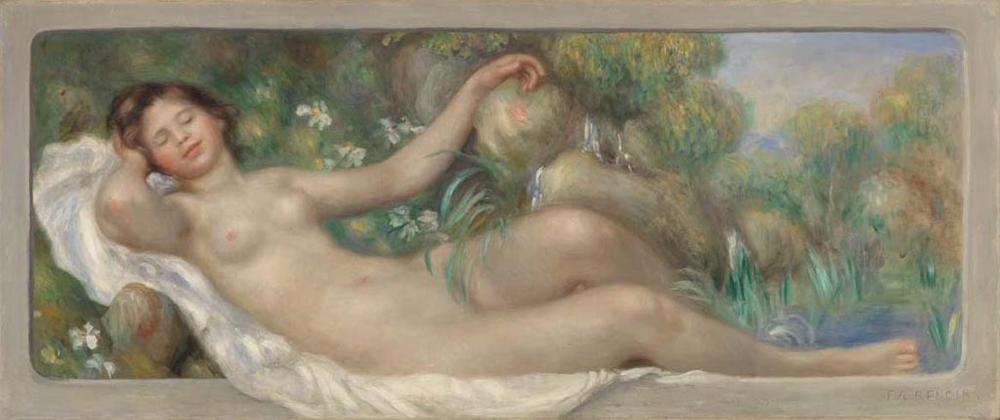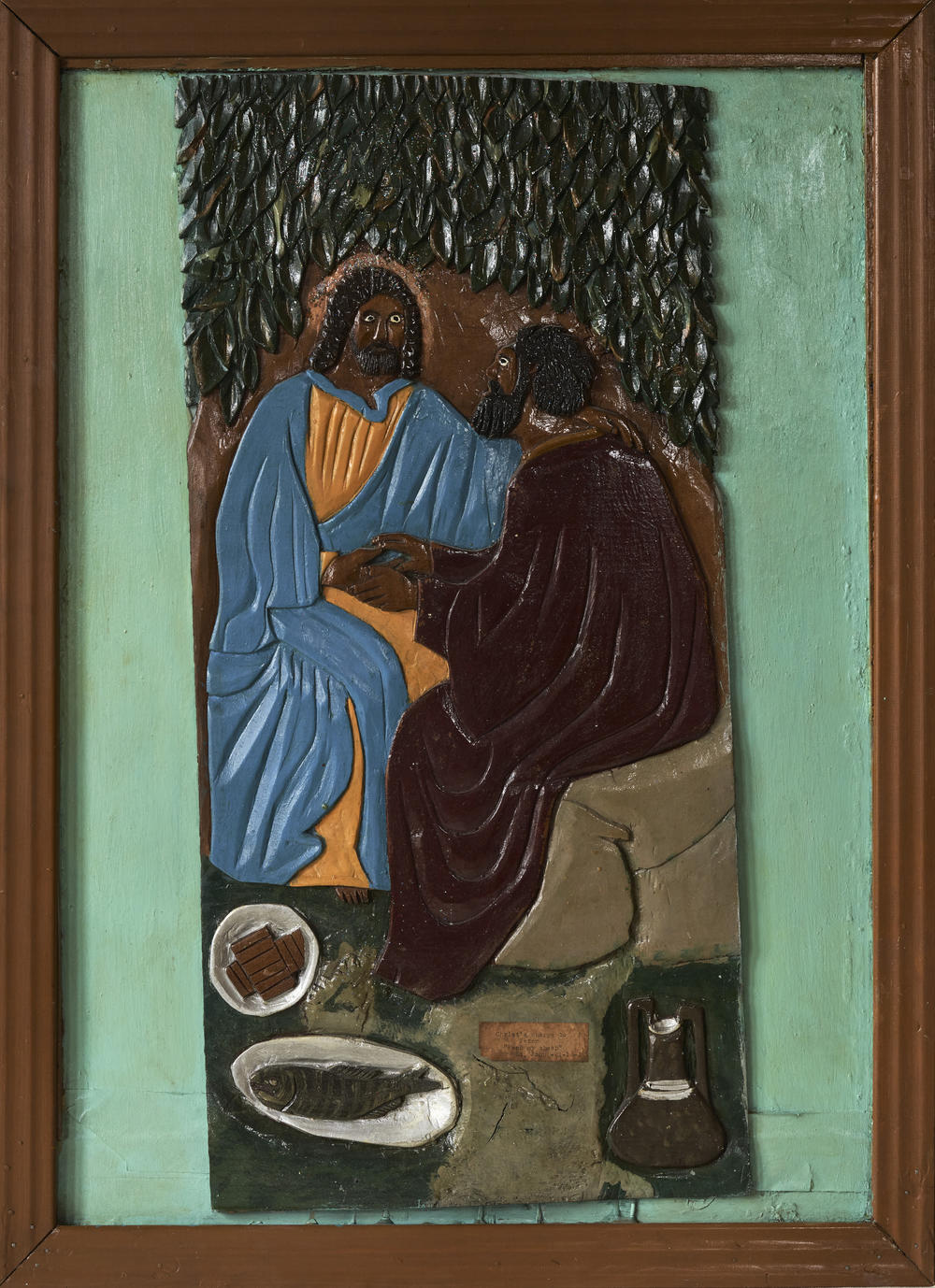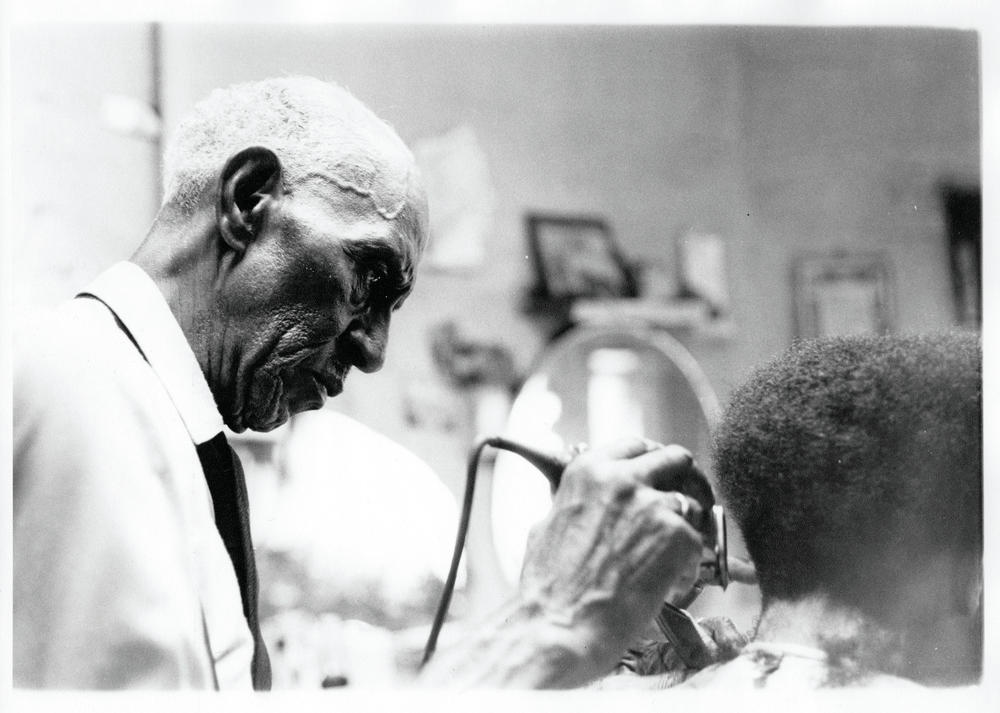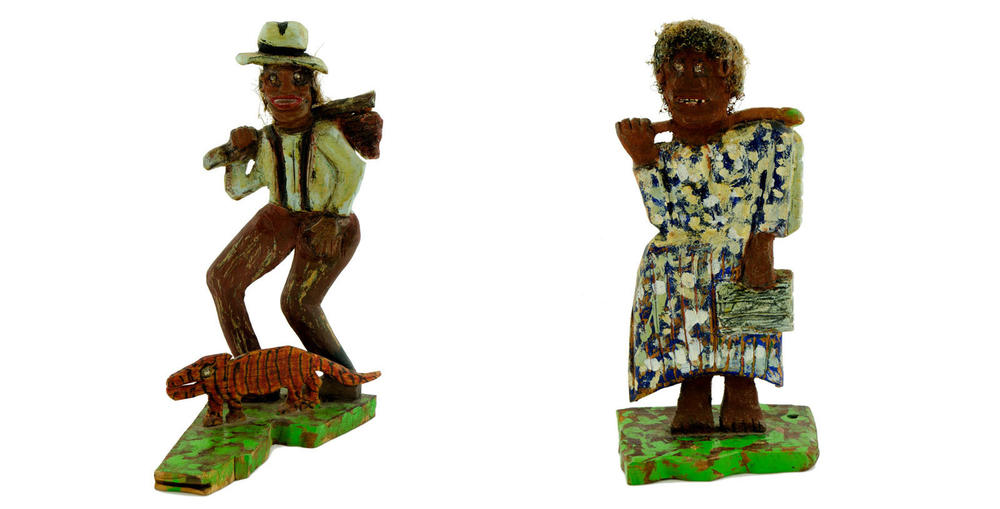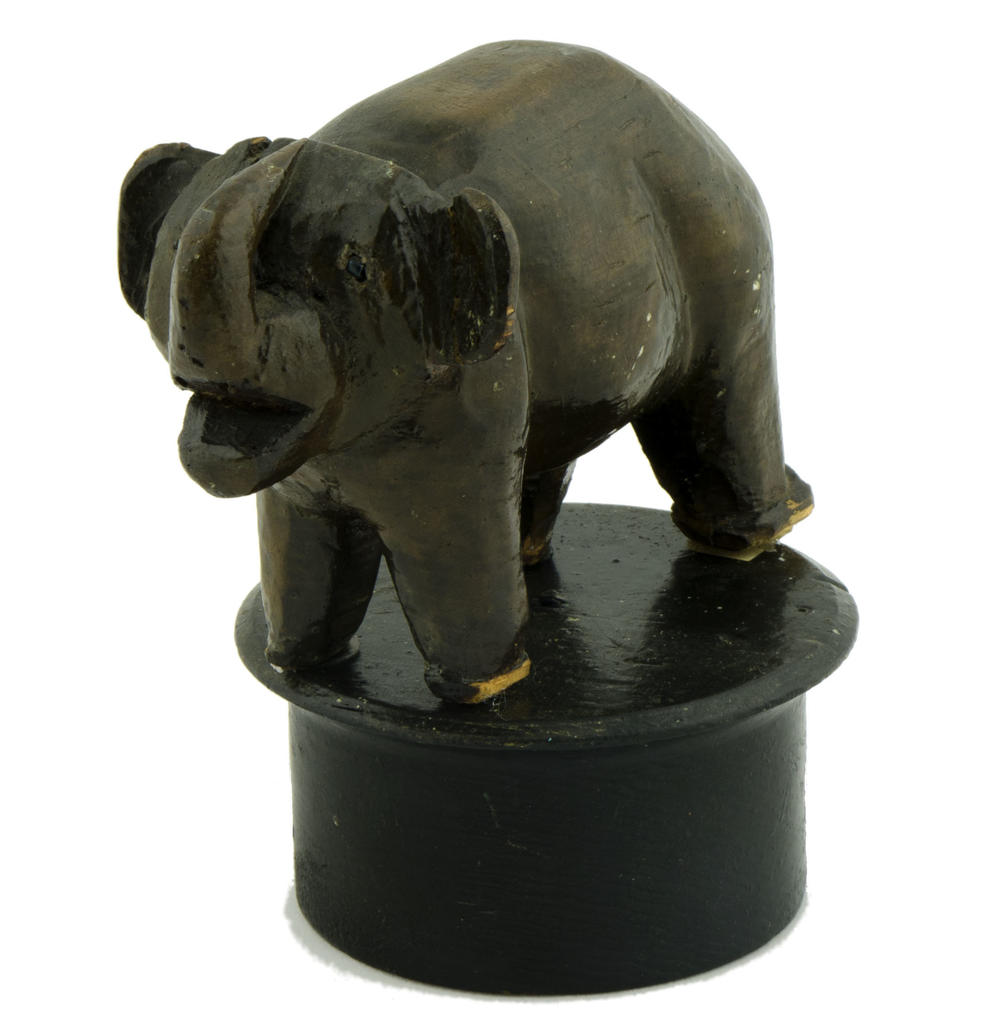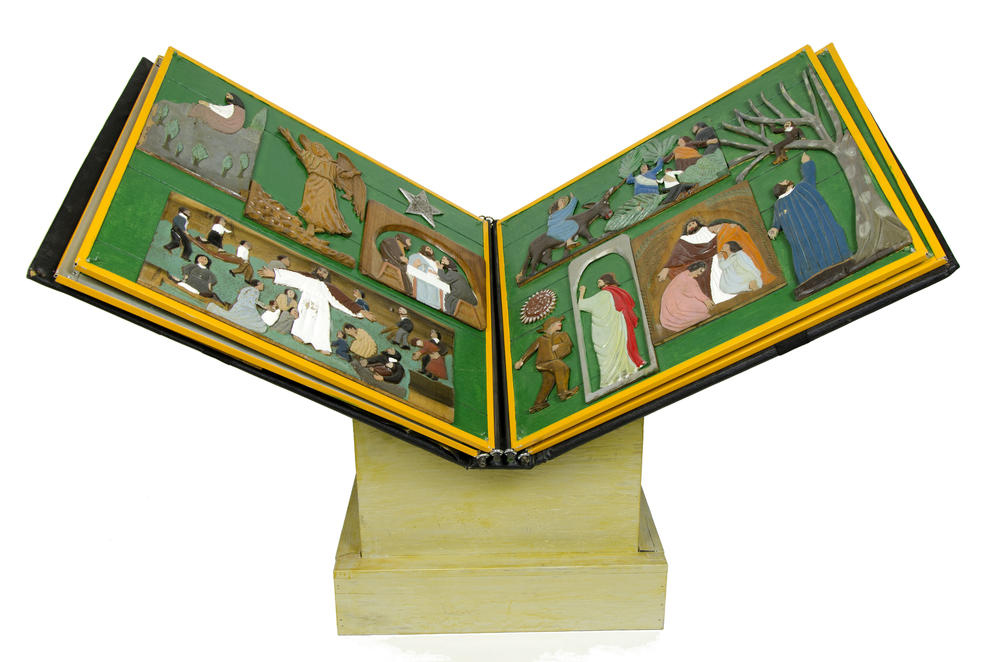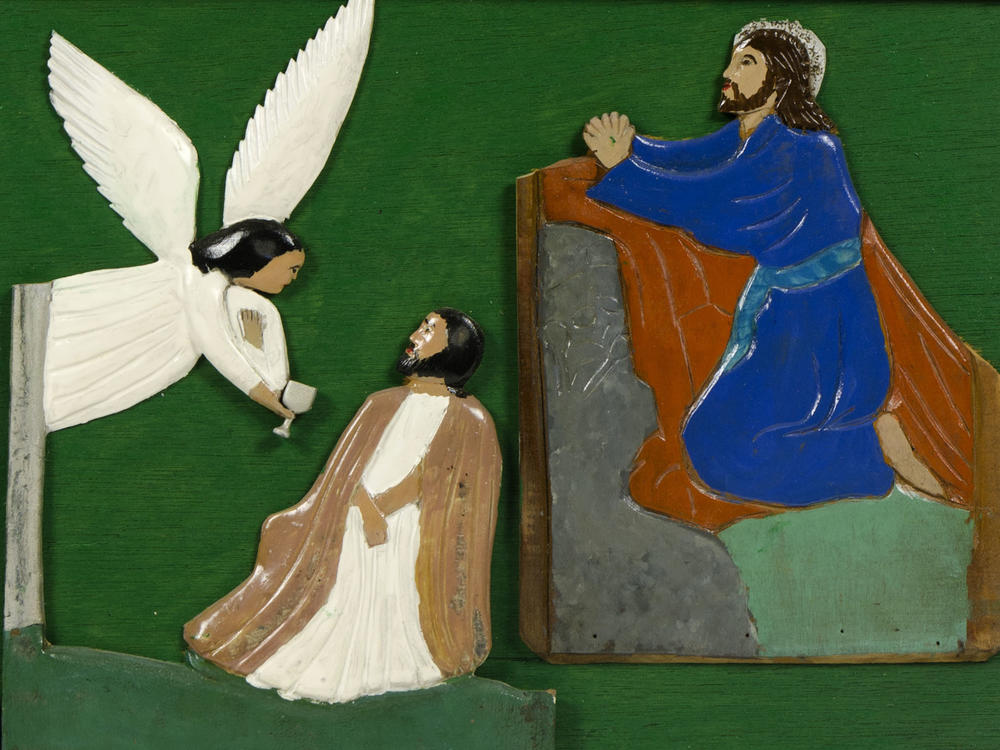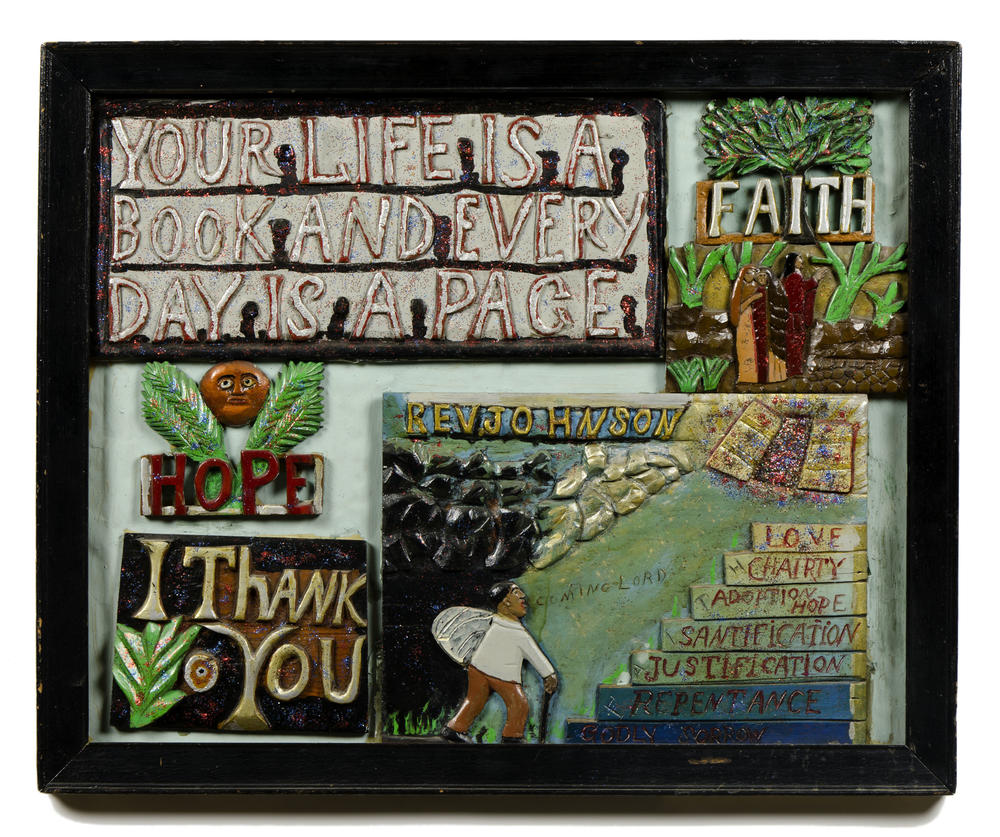Section Branding
Header Content
'Every Piece I Carve Is A Message': Elijah Pierce Aimed To Do God's Work In Wood
Primary Content
Years back, a friend visited the Barnes Foundation, a wonderland of Cezannes, Matisses, and zaftig Renoir gals. After going through the galleries she observed, "All those naked women! What's with that?!"
Today in Philadelphia, the Barnes nudes and other masterpieces are still on display. But my friend Barbara would also find more than 100 better-clothed works, created by barber and Baptist preacher Elijah Pierce.
Artwork created without formal training, expressing something the maker had seen or felt, or imagined, was once called "primitive" or "outsider" art. These days, it's called "self-taught" art, a more accurate term for work that couldn't come from expensive lessons, but rather from the heartfelt need to make marks.
What's it doing at the Barnes? Nancy Ireson, who co-curated the show with Zoé Whitley, says founder and collector Albert Barnes "was interested in self-taught artists ... and promoted African American artists."
Pierce was born in 1892 on his father's cotton farm in Baldwyn, Miss., — his father had formerly been enslaved. Pierce was just a kid when somebody gave him a pocket knife. After an uncle taught him to whittle, Elijah picked up bits of wood in the woods, and started to work.
"I'd carve anything that was a picture in my mind," he once said. "I thought a pocket knife was about the best thing I'd ever seen," he told the St. Louis Post-Dispatch.
Pierce carved his way throughout a series of odd jobs — barbering in an old man's shop in Baldwyn, carving, taking over the shop when the old man died, carving between doing 50-cent haircuts, getting a preacher's license, preaching, snipping, carving.
Elijah left Mississippi to join the Great Migration North — and carved and painted the experience on wood.
He ended up in Columbus, Ohio. Settled there. Met a new mate, and carved a small elephant for her. "She loved it," says curator Ireson. So he promised to carve her a small zoo.
Pierce opened a barbershop in Columbus, and in between customers, kept on carving. There's no record of how many pieces he made, he gave so many away as gifts — a small stork for new parents, a religious scene for someone going through hard times.
Deeply religious, he felt he was God's instrument as an artist. "Every piece I carve is a message, a sermon," he said.
The Book of Wood is his masterwork. Seven carved pages, each page two-by-two feet square, bearing 33 painted carvings — Bible scenes. The nativity, the life of Jesus, archangels. Although he sold lots of works over the years, Pierce kept The Book of Wood in his barbershop until he died. Now it's owned by the Columbus Museum of Art, and on loan to the Barnes' exhibition Elijah Pierce's America.
By the end of his life — Pierce died in 1984 at age 92 — he'd gotten serious recognition. There'd been a small show at New York's Museum of Modern Art, and his carvings were in museum collections around the country. Some sold for thousands of dollars.
But curator Nancy Ireson says money and fame weren't the goals. "Pierce didn't feel the need to be discovered." What was important to the artist/preacher/barber was that he was known to his congregation and his community. And he felt he was doing God's work.
Art Where You're At is an informal series showcasing lively online offerings at museums closed due to COVID-19, or at newly re-opening museums you may not be able to visit.
Copyright 2020 NPR. To see more, visit https://www.npr.org.
